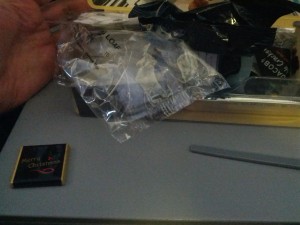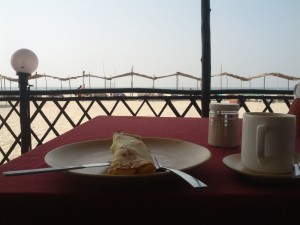My favourite city in the world is Varanasi, which lies on the banks of the Ganges, in the Indian state of Uttar Pradesh. Varanasi is so holy that it is a sort of ‘cheat mode’ for the universe. If you die there you never need be reincarnated, but instantly achieve the state of Moksha: dying in Varanasi saves a soul from millennia of different existences. In consequence there are a large number of hospices in the city, where the devout await the end of their lives in this holy place.
If you live in Varanasi then there is obviously a great danger in leaving it, even for a short time. By going outside Varanasi, you gamble with eternity – to have been so close to moksha and then die somewhere else is is ludicrous. Diane Eck writes, in her book Banaras, that everyone in Varanasi has a story of a relative who went to Calcutta and was unlucky enough to die there.
A friend of mine, E., used to live there about 5 years ago. Whenever we talk about Varanasi (also known as Kashi), we joke about a saying I found about the city, I think in Diane Eck’s book:
“having gained this holy ground one should smash one’s feet with a stone to make certain that the priceless treasure of Kāshī is not negligently lost!”
Both E. and I have negligently wandered from from Varanasi. I have a small fantasy that, when I am old, I move out there to die; but in the meantime I continue to risk life outside Kashi’s boundaries.
But there are those who have decided to forsake the power of dying in Varanasi. The poet Kabīr apparently did not believe in pilgrimage, and went to the town of Magahar to die instead, a place said to be so wretched that its Brahmins were reborn as asses. And there was Pandit Mālavīya who, dying, refused to move to the town because he did not want to be liberated from karma because there was too much to be done in his next lifetime in our world.



